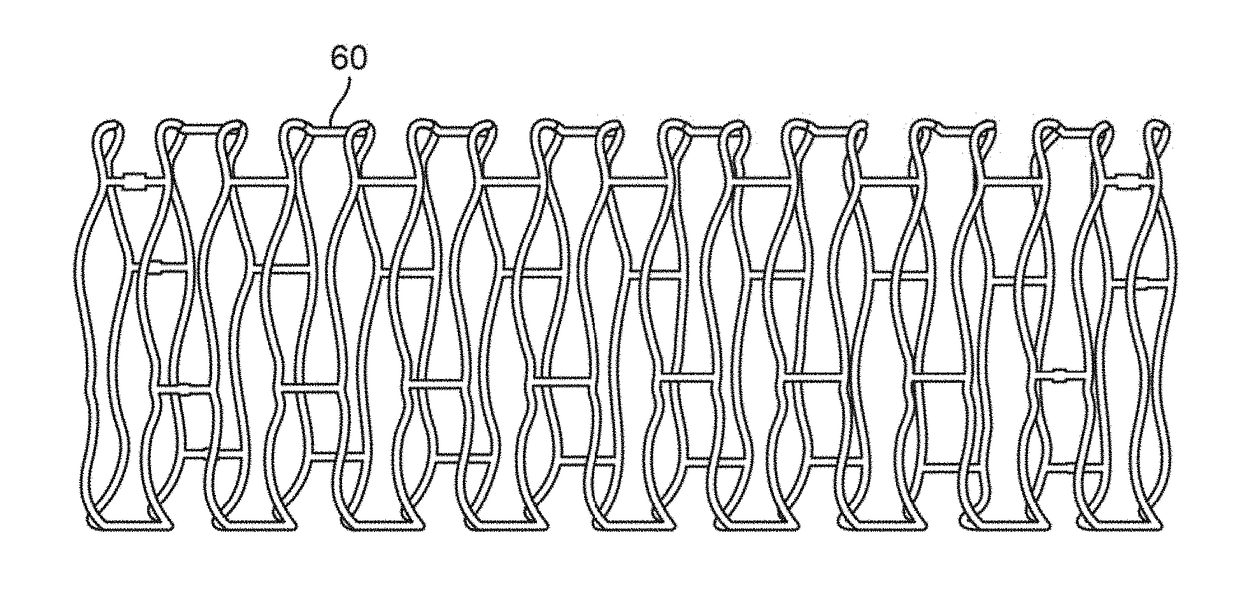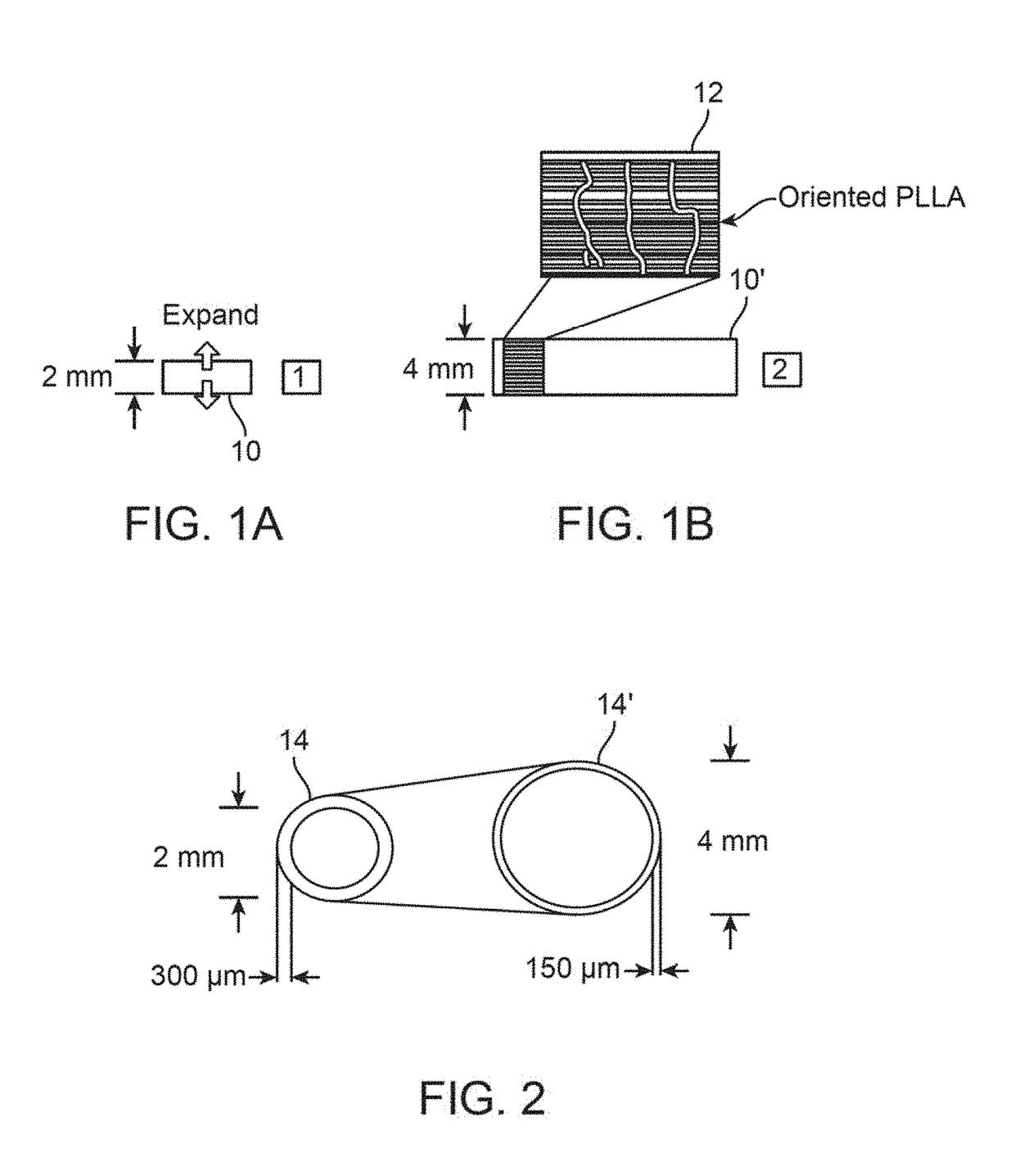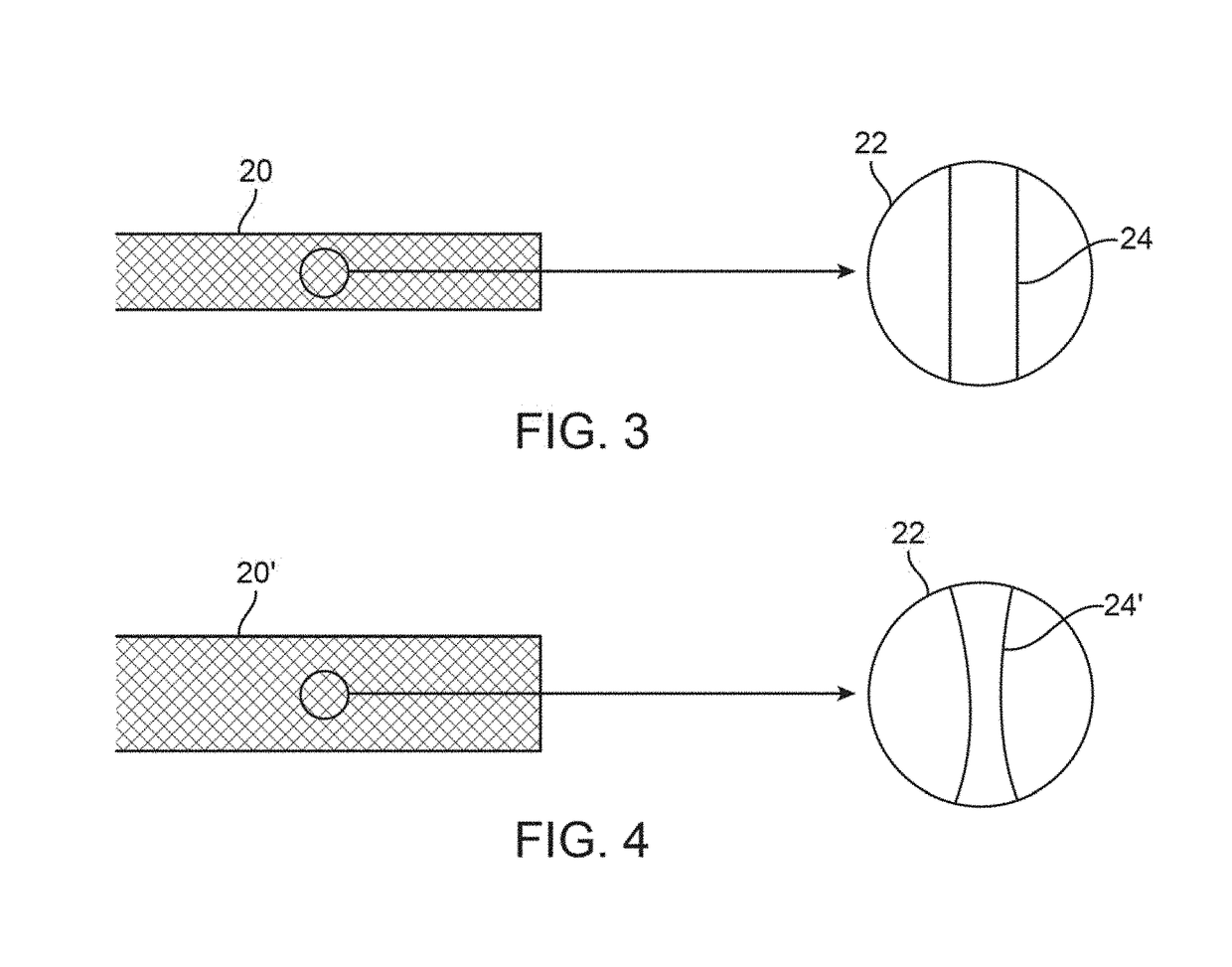Post deployment radial force recovery of biodegradable scaffolds
a biodegradable scaffold and radial force technology, applied in the field of manufacturing processes for forming or creating devices, can solve problems such as opening the polymer network
- Summary
- Abstract
- Description
- Claims
- Application Information
AI Technical Summary
Benefits of technology
Problems solved by technology
Method used
Image
Examples
example 1
[0109]In this example, a scaffold implant was mechanically crimped onto a rapid exchange (RX) balloon catheter delivery system. Finite element analysis (FEA) was used to characterize the scaffold in various crimped configurations under various compressive and extension loads to calculate the corresponding strain values. Due to the novel nature of the scaffold polymeric material and unique wall thickness, the results gathered from this evaluation are for characterization only. This analysis summarizes the strain values at critical points of the scaffold geometry and compares the FEA results for scaffolds having diameters ranging from about 3 mm to 4 mm. The FEA results demonstrated that strain in various configurations for each scaffold had similar results to one another. This is attributable to the unique and proprietary properties of the scaffold material and the unique scaffold wall thickness, as described herein.
example 2
[0110]The FEA analysis was repeated for scaffolds which were coated with a drug (Sirolimus) and similarly having diameters ranging from about 3 mm to 4 mm. The sirolimus drug-coated coronary scaffold implant was mechanically crimped onto a RX balloon catheter delivery system and FEA was used to determine if the mechanical crimping has deformed the laser cut shape beyond the point of a reversible loss, potentially creating a failure when the balloon is inflated to deploy the scaffold. The resulting FEA strain analysis demonstrated that strain in various configurations for each scaffold demonstrated similar results to one another. Due to the unique properties of the scaffold material and the unique scaffold wall thickness. in conclusion, based on these data, the strain was acceptable for all the tested stent scaffolds.
example 3
[0111]The FEA analysis was repeated for scaffolds which were coated with a drug (Sirolimus) and similarly having diameters ranging from about 3 mm to 4 mm. The sirolimus drug-coated coronary scaffold implant was again mechanically crimped onto a RX balloon catheter delivery system and FEA strain analysis was used to determine if the mechanical crimping had deformed the laser cut scaffold's shape beyond the point of a reversible loss, potentially creating a failure when the balloon is inflated to deploy the scaffold. This analysis summarizes the strain at critical points of the scaffold geometry and compares the values at different scaffold diameters.
[0112]The scaffold with a relatively smaller diameter and with no drug coating was tested extensively in five animal studies. In addition, eight of thirteen non-coated scaffolds were implanted in human patients. Each of these scaffolds have shown very favorable mechanical results. Since the primary mode of action is the scaffold mechanic...
PUM
 Login to View More
Login to View More Abstract
Description
Claims
Application Information
 Login to View More
Login to View More - R&D
- Intellectual Property
- Life Sciences
- Materials
- Tech Scout
- Unparalleled Data Quality
- Higher Quality Content
- 60% Fewer Hallucinations
Browse by: Latest US Patents, China's latest patents, Technical Efficacy Thesaurus, Application Domain, Technology Topic, Popular Technical Reports.
© 2025 PatSnap. All rights reserved.Legal|Privacy policy|Modern Slavery Act Transparency Statement|Sitemap|About US| Contact US: help@patsnap.com



